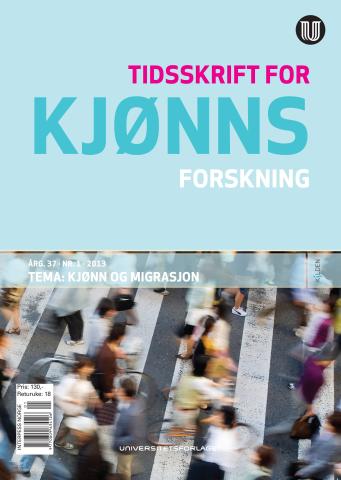Gender and migration

Articles
Eirinn Larsen:
In Gender’s Shadow. Foreign Students and Universities Disintegrating Role in Modern Norway
The mass entry of women into Norwegian higher education has been viewed by historians as a key arena for social and national integration. Apart from supporting near universal labour-market participation among women, the university formed a central sphere for feminist mobilization "from below" against systemic prejudice and practice in both the university and society. However, female students were not alone in challenging discrimination in this decade. Foreign students also mobilized, demanding equal treatment with Norwegian students in the wake of the "immigration stop" in 1975, which targeted unskilled immigrants from Asia and Africa. While Norwegian authorities later made some exceptions for non-Western students, the leading higher education institution, the University of Oslo, continued with discriminatory practices against foreigners. In 1981, for instance, the University introduced a quota system for applicants from non-Western countries in order to give room for students from "countries with systems and cultures of education more similar to our own". This made the University a leading "producer" of racial discourses in late modern Norway even as it complied with most of the demands from "white" feminists. This practice contributed significantly to impeding the integration of non-Western immigrants into Norwegian society and reinforced the notion that women’s issues in Norway are detached and separate from the fight against racism and ethnic discrimination.
Key words: Foreign students, gender equality, national narrative, race, ethnicity, history of higher education, immigration, University of Oslo (UiO)
Priscilla Ringrose:
Migrants of the New Norway: Sara Johnsen’s Upperdog
What evidence does Sarah Johnsens’ prize-winning film Upperdog (2006) provide of the ways in which the New Norway makes sense of itself and its migrants? The film unravels the intersecting lives of four Oslo-based young people: Asian half-siblings separated as toddlers and adopted by two Oslo families, a Polish domestic worker and a Norwegian Afghanistan veteran. This article explores the cultural narratives which emerge from the film’s stories of labour immigration and "quiet migration" (adoption). Do these narratives point to an understanding of the Norwegian nation as a "civic-territorial" entity or as an "ethnic-cultural" unity in the thralls of "white melancholia"? I suggest that the film’s engagement with these questions interpellates the Norwegian public discourses in the aftermath of the 22/7 massacre and arguing that Upperdog, while predating the tragedy by several years, anticipates its dominant narrative of "cultural intimacy".
Key words: Migration, adoption, domestic labour, intersectionality